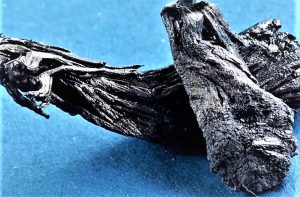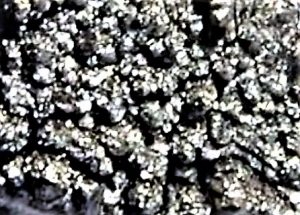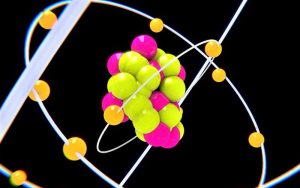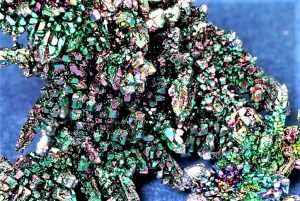Niobium
Niobium is a chemical element number 41 belonging to the refractory metals of Group 5 of the Periodic Table. Niobium is a strange, soft, malleable, ductile, gray-white metal. It is widely used in alloys, tools, stamps and superconducting magnets. Niobium is closely associated with tantalum in minerals and their properties. Its structure is crystalline and in its physical and chemical properties it is similar to tantalum. It must be placed in a protective atmosphere when processed even at moderate temperatures because it tends to react to oxygen, carbon, halogens, nitrogen and Sulphur. Metal is inert to acids, even to water at room temperature, but is attacked by hot and concentrated acids, and especially by alkalis and oxidizing agents.
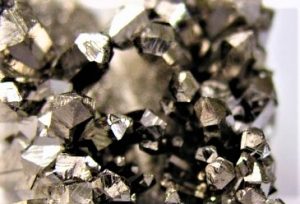
- Symbol: Nb
- Atomic number: 41
- Group: 5
What is niobium?
Niobium is a chemical element of the periodic table of elements. It is located in group 5 which belongs to the alkaloid metals. It is a metal that reacts to oxygen, carbon and nitrogen and is inert to acids.
Niobium characteristics
- It is also known by the name of Columbium.
- It is the element number 41 of the periodic table of the elements.
- Its name, symbol and atomic number are as follows: Niobium, Nb, 41 respectively.
- Its atomic mass is 92.90638 u.
- The electronic configuration of the niobium is: Kr]4d4 5s1.
- Its ordinary state is solid state and its density is 8570 kg/m3.
- Its melting point is 2750 K (2477 °C) and its boiling point is 5017 K (4744 °C).
- It is a transition metal and is found in group 5 of the periodic table elements.
- If the metal is inhaled, it is retained inside, the lungs and can pass to the bones interfering with the function of calcium in the activation of the enzyme system.
History
The origin of niobium comes from Greek mythology. According to the myth, Niobe, daughter of Tantalus, petrified herself with her own tears after her children died and for this reason she was baptized Niobium. In 1734, John Winthrop discovered a mineral in Massachusetts, United States, and decided to send it to England where it was exhibited in the British museum until it was analyzed and studied by the English chemist Charles Hatchett. After several analyses, Hatchett called the new element columbium in Columbia’s honor. In 1809, the English physicist William Hyde Wollaston made a comparison of the element with others reaching the conclusion that it was different and called it tantalum. In 1844, Heinrich Rose, a chemist of German origin, worked with samples of tantalite and columbite and separated them into acid forms, which he called niobic acid and it was years later that the chemist Jean Charles de Marignac isolated the metallic niobium by heating chloride in a hydrogen atmosphere.
Who discovered niobium?
It was found in Massachusetts by John Winthrop, and catalogued as a foreign material, so it was sent to England. In 1801 the English chemist Charles Hatchett analyzed it and called it Columbium. However, after a few years another scholar, the English physicist William Hyde compared it with other elements and determined that it was Tantalum. Sometime later, the German chemist and mineralogist Heinrich Rose, changed his name to Niobium and finally, in 1949 the International Union of Pure and Applied Chemistry (IUPAC) officially named him: Niobium.
Properties
It is found in the form of metal and can be converted into a superconductor at cryogenic temperatures. These conduction properties also depend on the metal’s purity, because if it is very pure, it will be softer and ductile. When exposed to air at room temperature, it acquires a bluish tone. It is corrosion resistant, has superconductivity characteristics and can form layers of dielectic oxide. It is a very common element found on the surface of the earth and is found freely within nature.
What is niobium for?
Niobium is a metal that can be used as an alloying element in some types of stainless steels and other non-ferrous alloys. These alloys are quite strong and resistant and are often used in pipe construction. They can also be used in the following fields:
- It can be used in welding some stainless steels.
- It is used in piercings, generally alloyed, due to its bluish color.
- Abundant amounts of niobium are used in nickel, cobalt and iron based super alloys to create the different components of aircraft engines, rockets and refractory
- Some alloys made with this metal are used in the winding of superconducting magnets capable of producing extremely intense magnetic fields.
Where it is found?
Niobium can be found in nature, for example, in columbite minerals, and is found mainly in regions of countries such as Brazil, Canada, Nigeria and Russia.
How to cite this article?
Briceño V., Gabriela. (2019). Niobium. Recovered on 23 February, 2024, de Euston96: https://www.euston96.com/en/niobium/



